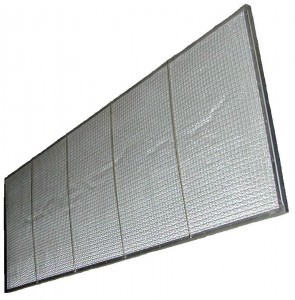What is Catalytic IR Drying Technology?
 Catalytic IR Explanation
Catalytic IR Explanation
Gas Catalytic Infrared is a flameless infrared technology medium that we use to dry and cure wet product or dry powder coating on a variety of substrates in many different industries.
It is an exothermic chemical process in which gas (natural gas, propane or butane) is converted into energy and long wave IR through precious metals such as platinum and palladium.
It is a totally flameless catalytic process using chemical conversion to catalyse the gas into the energy we then emit in our installations.
Our gas catalytic emitters are safer than many types of electric infra-red with elements that are susceptible to failure. Gas catalytic IR is more effective than electric infrared as the emission spectrum ideally matches the absorption spectrum of organic coatings. More information below.
When working with temperature sensitive substrate (resinous woods and plastics for example) the temperature should remain as low as possible.
We are only able to achieve this with our catalytic infrared technology, relying on the long wave infrared to cure the product and not direct heat as with other drying media.
We have used this technology to dry and fully cure the following liquid finishes:
- Solvent based (base and top coats – pigmented and clear) High solid AC lacquers.
- Water borne (stains, base and top coats – pigmented and clear in the wood, plastic, automotive and glass industries)
- Polyurethanes (single and two pack)
- Acrylics (wood, plastic and automotive)
- 2K products.(Automotive and Aerospace)
- Wax-free polyesters.(Automotive and yacht interiors)
- Vulcanised rubber held in solvent solutions (printing blanket industry)
- Etching and weld-able primers (Metal)
- Intumescent coatings (Structural steel)
- FP coatings (Internal joinery and doors)
- Glues and adhesives.
Our gas catalytic infrared heaters will dry and cure almost any wet finish in a fraction of the time that it would take traditional methods at a fraction of the running cost.
The same type of gas catalytic infrared can be used at a much higher output and thermal intensity to flow and cure powder much faster than traditional methods of hot air, at a fraction of the cost.
This technology can be retro-fitted inside some existing powdercoating tunnels.

